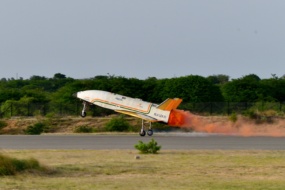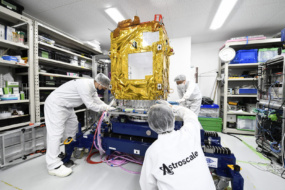20 years after launch, ESA’s Mars Express orbiter is still notching new achievements. On Friday, the spacecraft broadcast the first ever livestream from Mars.
Previous space missions—including Neil Armstrong’s step seen ’round the world during Apollo, and last year’s DART mission to bump an asteroid off its course—have provided the public with live imagery from space, but none from so far away as Mars. “When it comes to a lengthy livestream from deep space, this is a first,” ESA wrote in a release.
Live from the Red Planet: To get a truly live broadcast from Mars, which is currently ~200M miles away, you’d have to break some laws of physics by transmitting data faster than the speed of light in the vacuum of space. Still, Mars Express did the best it could, beaming an image of the planet’s surface home to Earth every 50 seconds for about an hour.
“Normally, we see images from Mars and know that they were taken days before. I’m excited to see Mars as it is now – as close to a Martian ‘now’ as we can possibly get!” James Godfrey, the spacecraft operations manager at ESA’s mission control in Germany, said.
- Each image took ~17 minutes to reach Earth, and another minute to process in ground stations.
- Viewers at home experienced some weather-related delays—par for the course for space fanatics—due to rain storms over the deep space relay station in Spain.
- As of Sunday evening, the livestream had nearly 1.4M views on YouTube.
As the craft orbited Mars, snapping photos along the way, the planet grew closer and closer in our field of view, then shrank away again.




